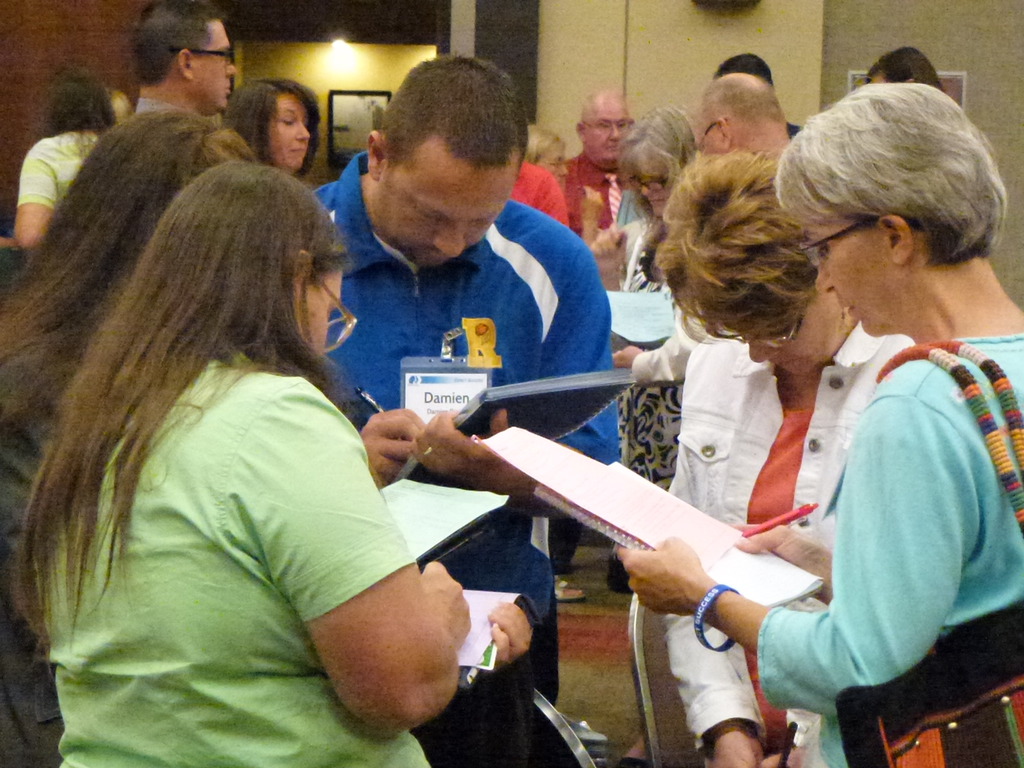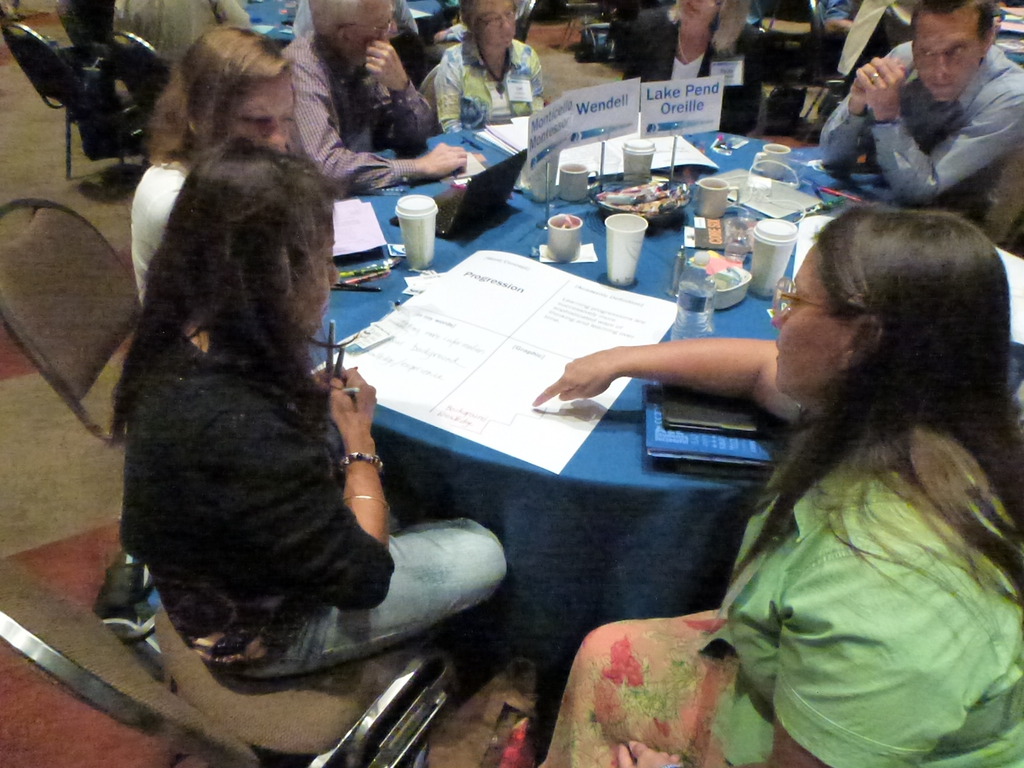What is rigor?
How do people best learn?
What do the Idaho Core Standards mean for our practice?
How can we be good citizens in a digital society?
These were some of the questions discussed by educators and school board members from 64 Idaho districts and charters during a two-day learning project hosted by Idaho Leads.
Idaho Leads is a professional development team from Boise State University that aims to build leadership capacity with schools that volunteer to make a year-long commitment. In its first year, Idaho Leads worked with 49 districts. An additional 15 signed on for the 2013-14 school year. The professional development held this week focused on building leadership capacity as well as Idaho Core Standards, which are required to be implemented in every Idaho school this fall.
 The nearly 200 people who attended included superintendents, trustees and “key implementers” or school administrators or teachers charged with leading their co-workers through implementation of Idaho Core Standards.
The nearly 200 people who attended included superintendents, trustees and “key implementers” or school administrators or teachers charged with leading their co-workers through implementation of Idaho Core Standards.
“This has been unbelievable and what I needed,” said Tony Bonuccelli, a first-year principal from Moscow Charter. “This has opened some doors for me. I haven’t been bored one bit.”
The 64 participating districts came from all corners of Idaho, including Coeur d’Alene, Idaho Falls, Mullan and McCall.
“This is very valuable,” said Suzanne Gregg from Anser Charter in Boise. “We are at a good place with the standards but this is a really important over view exercise that we’ll take back to our staff.”
What is rigor: An environment in which each student is expected to learn at a high levels; where students are supported at high levels; and where students can demonstrate that learning at high levels. — Barbara Blackburn
The day was broken into sections for learning purposes. Part of the morning was devoted to Idaho Core vocabulary. Participants worked together to define words like rigor, scaffolding and evidence. They practiced articulating their definitions to different audiences, including parents, students and staff.
“Vocabulary is at the core of the Core,” said Patricia McRae, a staff development coordinator with the Idaho Leads project. “You must learn the vocabulary to deeply understand the standards.”
Other chunks of the conference were devoted to discussion on preparing the public for changes that come with the new standards, different assessments and technology’s impacts on today’s classrooms.
At the start of the day, many of the participants said they had no understanding or a slight understanding of Idaho Core. Not one participant said they had a complete understanding of Idaho Core.
“I’m here because I don’t know enough about Idaho Core,” said Garden Valley Superintendent Randy Schrader. “This has really shown me how to connect all the standards together, from anchor standards to content standards. It’s been really good.”
Schrader said it was very important that he attend this training session, even though it was the first day for teachers to report back to work in his district. In Mountain Home, Wednesday was the first day for students but still Superintendent Tim McMurtrey attended the Idaho Leads event to gain more knowledge to share with this staff.
Idaho Leads facilitated learning and conversations about the Smarter Balanced assessment system and why it matters and how it affect teaching and learning. Students in Idaho will be assessed on Idaho Core Standards next Spring.
Another activity offered by Idaho Leads was learning about digital citizenship, that included anecdotes from kids and a panel discussion held over the Internet with experts from Washington, Oregon and other Idaho cities.
“Idaho Leads is awesome … just awesome,” said Mary Ann Ranells, the superintendent of the Lakeland School District in North Idaho.
Disclaimer: Idaho Education News and the Idaho Leads project are both funded by a grant from the J.A. and Kathryn Albertson Foundation.


